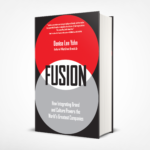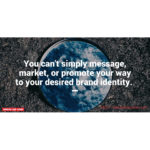Does Self-Help Work for Business Teams?
Most people readily agree that self-help works for individuals, but does self-help work for business teams? Consultants Al Cini and Mark Iorio say yes — emphatically. They are the founders of the Brand and Culture Alignment Toolkit (BCAT) and they’ve successfully taken more than 1500 participants in groups of all kinds and sizes through a self-help-style process of improving their outcomes and teamwork.
The premise of Mark and Al’s work is that when you align your brand and culture, you enhance your performance and accelerate your results because you:
- Deeply connect with all the people you serve
- Bring your organization’s unique brand Identity to life and turn it into a competitive advantage
- Significantly boost employee engagement
I wholeheartedly agree, so I recently spoke with Al and Mark to learn about the BCAT. Here are excerpts of our discussion (condensed and edited for clarity):
DLY: How did you develop the BCAT model and survey instrument?
Al: I have a background in behavioral studies, statistics, and psychometrics and the BCAT model is developed from accepted models of human behavior. We use a model similar to Myers-Briggs Type Indicator, DISC, Predictive Index, etc. but instead of measuring individuals as they are, we are trying to idealize what all members of an effective organization want it to be — in other words, create that ideal role model, a sort of virtual person.
Mark: My agency was doing work for the AAA in Philadelphia and the client wanted us to look at their internal branding, applying an understanding of how people culturally assimilate to something like the U.S. Constitution. I took our team out to an internal brand-building conference and speakers from Tiffany, Southwest Airlines, Ritz Carlton, and others were talking about delivering on a brand promise and tenets for internal branding. My business and my life changed as a result of understanding the value of this brand promise and how you deliver on that. So when Al and I met, it was like a match made in heaven.
DLY: What is the BCAT standard model of brand and culture?
Al: If you want to be better, then imagine there are 4 dials inside your head that you can adjust up or down. Each is characterized differently:
- precision — methodical, scientific, detailed descriptions
- purpose or goal — focused on conclusions, a driver, resolve
- innovative — spontaneous, expressive, less predictable
- harmony or relationship — harmony, better listener, inclusive
The BCAT model incorporates these four dials into quadrants on a map. It’s comprehensive and describes all dimensions of controlled behavior that a human can learn to adjust.
DLY: How do you use the BCAT with organizations?
Al: We take a selected group of stakeholders and leaders and we ask them the “incorporating question” to get them all thinking about their organization as a single person – that is, “if my organization were a single person doing its best work on its best day to keep its promises and deliver its best results, what would that person be like?” We then ask each person to individually take the BCAT survey which asks them questions to describe that virtual person.
Their answers produce a data point on the BCAT model map. There are 24 possible points on the map and we collect all the data points from all the survey takers. So you get all the different points of view about this “person” and can see where you landed and where everybody else landed and where the differences are.
If a company’s brand and culture are aligned and clearly communicated, then we expect a tightly gathered results around a few possible targets. The less aligned an organization is, the more scattered the results come back. In BCAT 2.0 which is coming out soon, we’ve added a meter to indicate how aligned the results are. So taking the survey is a great way to learn and identify the differences of opinion. That way, people know where they are and where they need to move to.
DLY: Then what?
Al: The next conversation is to come up with a “consensus role target,” the ideal behavioral pattern for this organization. Often it’s not where any of the participants landed, so the point of BCAT isn’t to end conversation by giving you a result, but to begin conversation by giving you information perspective. So we’ve taken a company from an incorporated thing to a psychological thing.
We then ask people to make personal alignment plans — that is, to make specific commitments to change specific aspects of their observable behaviors within the context of their individual jobs in order to align with the consensus role target. And then we meet periodically afterwards to check and see how they’ve progressed.
Mark: We run a one or two hour workshop every month or so — and then every quarter after that — to make sure everyone who has committed to their plans are doing them. People self-select — people who don’t feel they belong won’t make the commitments and many of them depart the organization.
DLY: How is the BCAT different from other assessments out there?
Mark: To our knowledge, no one else has an instrument like this. In the past, to do an assessment, we would do informational interviews, focus groups, etc. and hire linguistic experts to look at our research and uncover the meaning of the words being used to describe the brand and culture. It was a long and tedious process and all qualitative. And it was all subjective. We were putting a stake in the ground, but we didn’t have a real consensus. BCAT gets us very close in very scientific way faster and a lot more efficiently.
Also this is an unemotional approach. People aren’t hanging on to the legacy of how their organization used to be. We’re able to say this is what you agreed upon is the role target, what you aspire to is what you all agreed to be — so they adjust based on that true north.
DLY: How do you address the fact that an organization can aspire to be something but not necessarily be able to achieve it? How do you translate aspiration into reality?
Al: There aren’t any innate qualities on the map. We are reporting only those things that research has shown people can adjust by learning new behaviors, so people are focused only on those things they know they can change.
What we’re doing is creating a self improvement system — where people create their own plans to move forward to align with the company’s brand and culture. One of my favorite quotes is from Peter Senge: “People don’t resist change. They resist being changed.” As soon as you tell people what they need to do, they set up defensive systems to make sure they will never give you what you told them.
Instead, we give people a system wherein they can learn new behaviors that are desireable and relearn existing behaviors that will help them get closer to that goal. We recommend they make no more than 2-4 commitments and then we ask them to identify an accountability partner, someone they can work with, maybe mutually, to check and see if they’re making progress and achieving their goals. The goal is to make that plan a living plan — ultimately the goal is a sustainable culture of self improvement.
***
You can check out the BCAT at https://getbcat.com/ and learn about the incredible results Mark and Al have produced with their clients including doubling employee engagement and improving KPIs such as:
- 10% higher customer ratings
- 21% higher employee productivity
- 22% increased profitability
- 25% lower turnover in high-turnover organizations
- 65% in low-turnover organizations
related:


